EXCLUSIVE PREVIEW: In this month’s Back Issue! magazine excerpt, we take a look at a title that deserves the omnibus treatment…
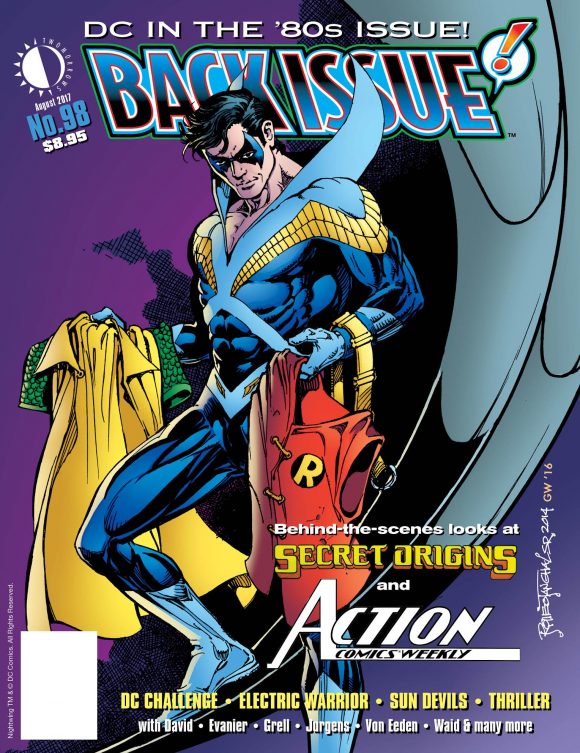
How cool would it be if DC sat down and put out a series of hardcovers or paperbacks covering all its Secret Origins titles, going all the way back to the beginning?
What an incredible resource that would be: Presenting the origin stories of the company’s biggest (and, often, smallest) stars as first published, then embellished and embellished again.
The idea popped into my head when reading John Wells’ detailed history of the ’80s version of the title in the upcoming Back Issue! #98, which starts shipping 7/12. (Ask your local shop when it’s coming to your neck of the woods, because it can vary. You can also get it directly from TwoMorrows.)
Anyway, here’s an excerpt from Wells’ piece. There’s much more to it in the issue itself, but this lays the groundwork, covering the first several decades of the Secret Origins concept.
I’ve also included the table of contents for the issue, the theme of which is DC in the ’80s.
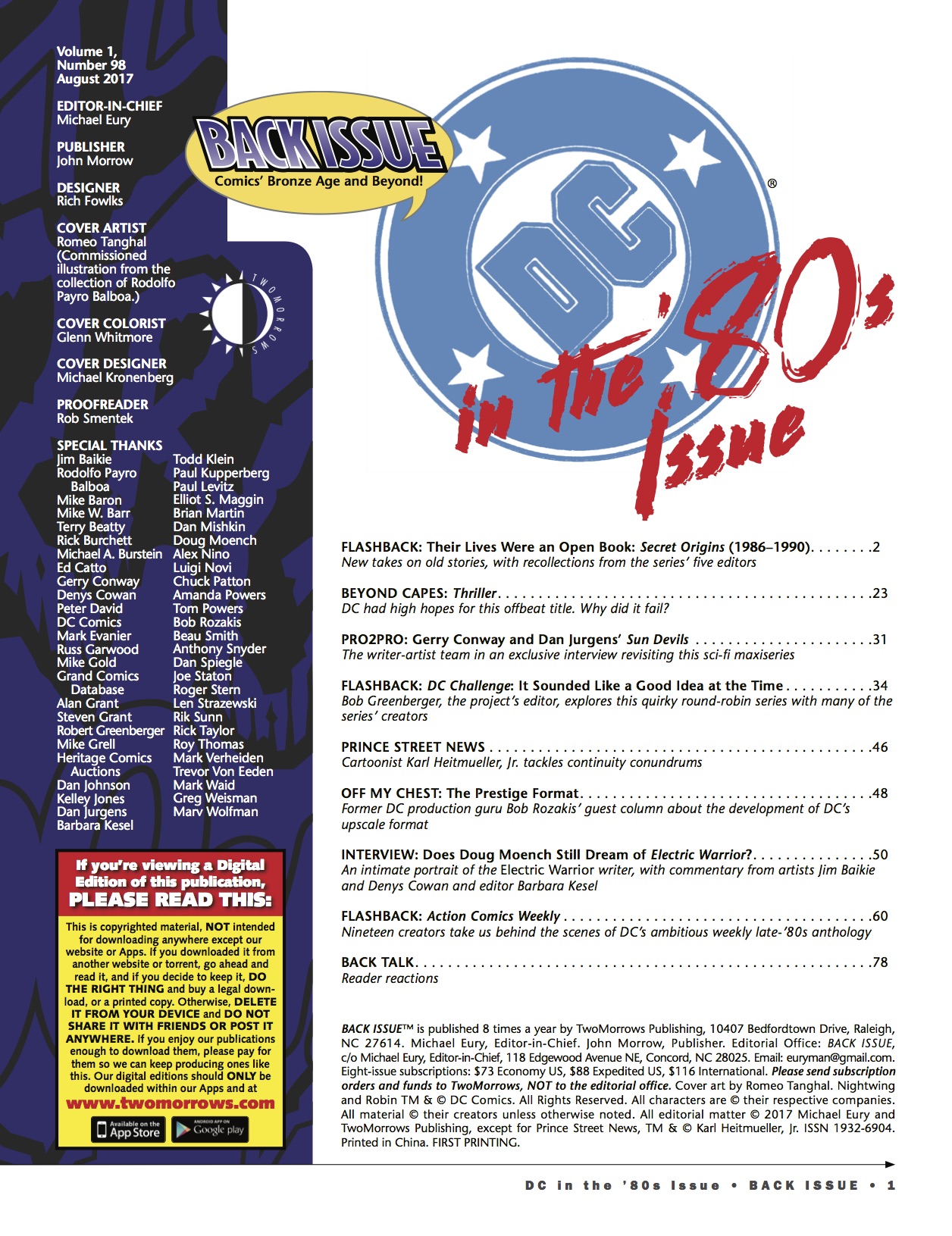
—
By JOHN WELLS
There is a school of thought that the origin story is a necessary evil, a preamble to get out of the way before the real fun begins. There’s some truth in that, particularly in an age when endless film and comics reboots seem concerned with nothing but origins at the expense of moving forward. And yet, there’s an almost primal need on the part of superhero fans to know how their favorite character started out. Lee Falk realized that early in his 1930s Phantom newspaper strip, introducing a concise, oft-repeated recap of the hero’s roots “for those who came in late.”
At DC Comics, the spring of 1948 seems to have been the point when the publisher realized that such things might have commercial appeal. Batman #47 and Superman #53 each cover-featured “the origin of…” their respective leading men, expanding and revising details from the late 1930s’ accounts. During the 1950s, “origin” stories—i.e., tales actually using that word—also popped up at other publishers, but none did more so than DC.
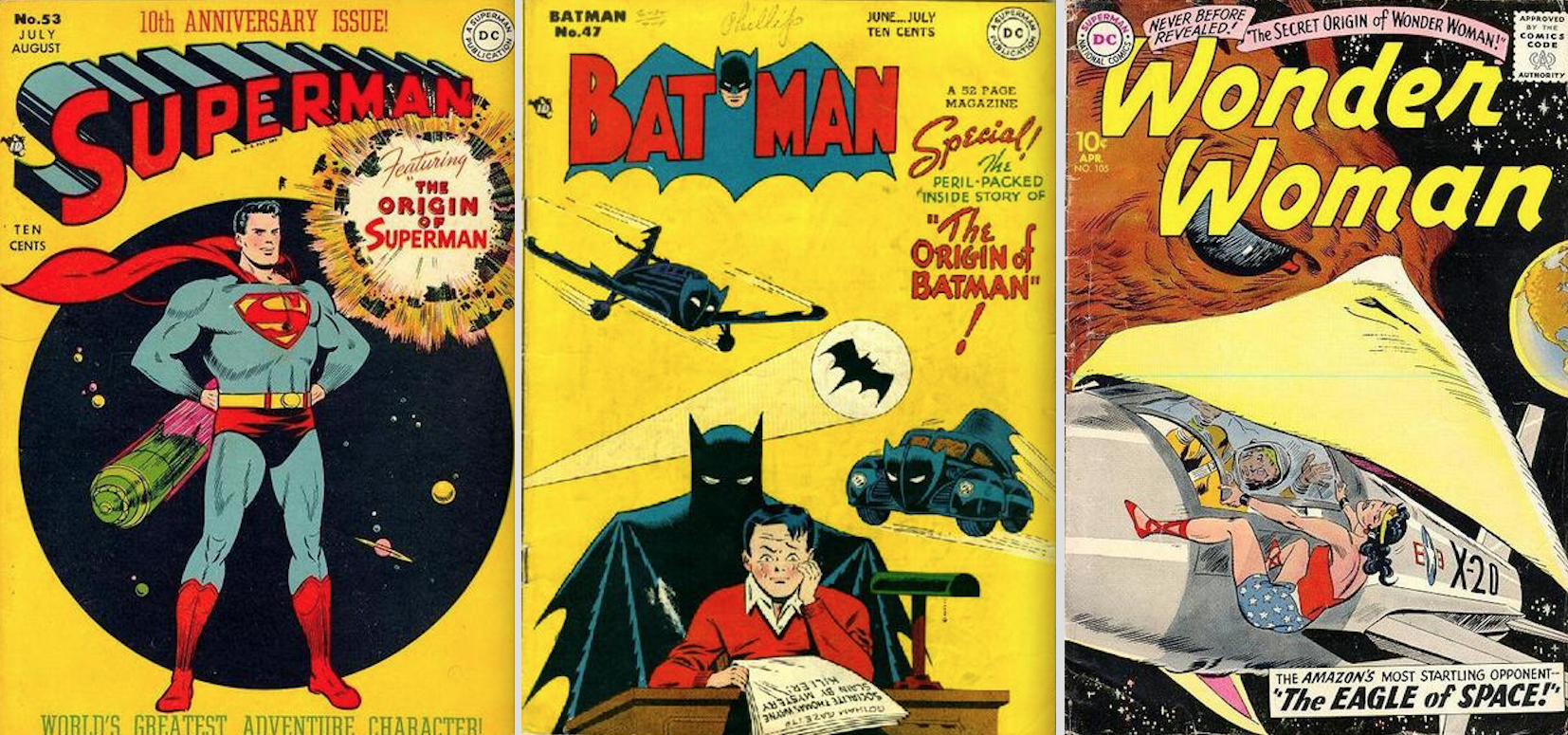
It seems to have been writer-editor Robert Kanigher who decided those episodes could be spun in a more sensational way. Hence, the Secret Origin of Wonder Woman in WW #105 (Apr. 1959), a provocative title that almost commanded kids to pick up the issue so that they, too, could be privy to facts known to no one else. A scant four months later, “secret origin” was used again on the cover of All-Star Western #108’s Johnny Thunder reboot.
DC cemented its association with the phrase in 1961 when it published Secret Origins #1, a gloriously over-stuffed 80-page collection of reprints featuring the likes of the new Flash, the new Green Lantern, Wonder Woman, the Superman/Batman team, and more. Kids of the day ate it up and a sequel—More Secret Origins—eventually followed in 1965’s 80-Page Giant #8.
Secret Origins returned late in 1972 as an ongoing reprint book, one that benefited considerably from having DC expert E. Nelson Bridwell as its editor. Supplementing the vintage material, Bridwell also included a text page in each issue that briefly laid out the history of the sometimes-obscure characters featured in its pages. A nationwide paper shortage prompted the title’s cancellation after seven issues, but the name was far from retired.
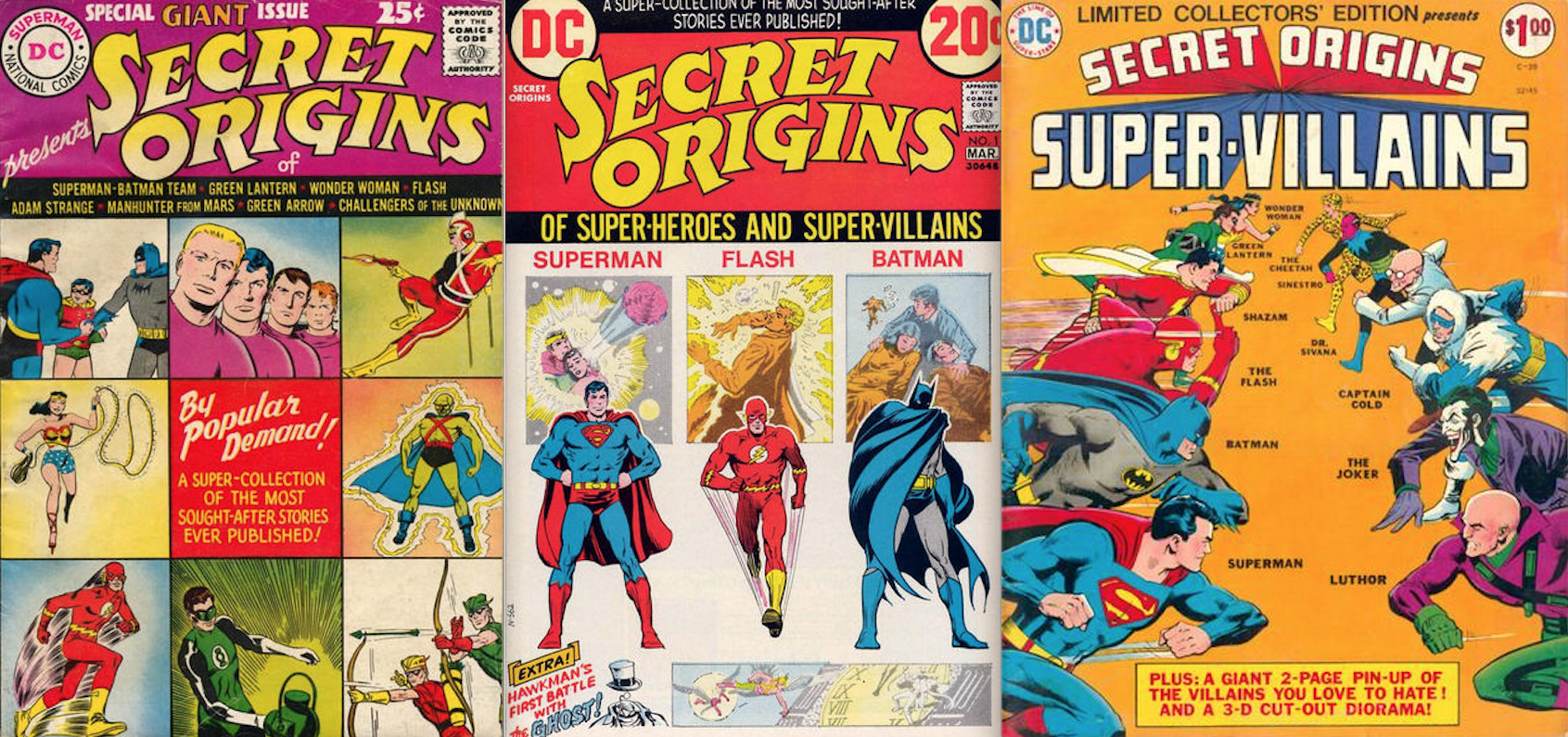
Limited Collectors’ Edition #C-39 (1975) and C-45 (1976) were each devoted to Secret Origins of Super-Villains, while a hero-centric hardback was published in 1976 as a response to the hit Origins of Marvel Comics volume of 1974.
Significantly, 1977’s DC Super-Stars #14 abandoned the reprint model for a new trio of stories featuring supervillains. It was followed in short order with a pair of similarly original specials keyed to heroes (1977’s DC Super-Stars #17 and 1978’s DC Special Series #10).
Secret Origins returned to its…well, origins in 1979 with the first of several reprint digests (DC Special Series #19) alternately keyed to either heroes (DC Special Blue Ribbon Digest #5, 9, and 22) or villains (Best of DC #10; DC Special Blue Ribbon Digest #15). Bonus new stories devoted to Wonder Woman, Zatanna, and the Penguin opened the earliest editions.
—
SECRET ORIGINS, REVISITED
By the summer of 1984, the last of those digests was more than two years old and writer-editor Roy Thomas was formulating a new take on the old title.
“While on a 6000-mile drive with my wife Dann around the western half of the US,” he wrote in The All-Star Companion #4 (2009), Thomas wondered, “Why couldn’t we redraw and re-dialogue—and even, where necessary, re-think—those fabled stories from the 1930s and 1940s? That would avoid the stigma associated in some readers’ minds with simply reprinting old stories.”
There was also the fact that several of those early costumed heroes never had origins at all, instead debuting fully formed with no explanation of how they got there. Thomas was, in fact, working on a story that was a virtual prototype for what he envisioned for the new Secret Origins. Noting that
Starman had debuted in 1941 with no real backstory, Thomas built on details that had taken place back in Adventure Comics #61, added a retroactive sequence involving Phantom Lady, and plotted a proper origin that ran in All-Star Squadron #41 (on sale in October 1984).
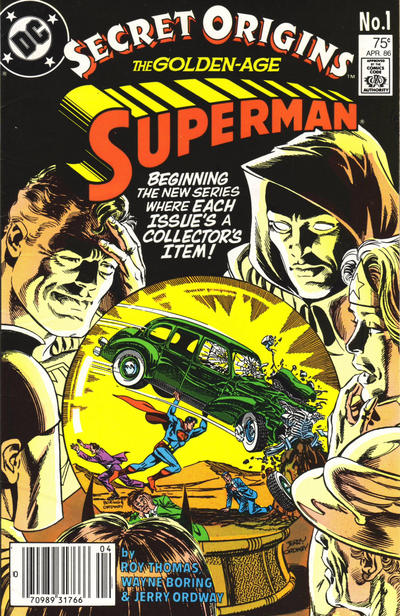
Managing editor Dick Giordano and DC’s higher-ups approved the proposal with one revision. Despite the success of Thomas’ World War II-based All-Star Squadron title, the reality was that period books were a tougher sell to young readers than books set in the 1980s. Consequently, every third issue of Secret Origins would feature a Silver or Bronze Age hero. To that end, Thomas decided on Adam Strange and the Elongated Man for his initial post-1940s heroes and respectively assigned Gerry Conway and Mike W. Barr to write the scripts.
Thomas otherwise intended to spotlight Golden Age heroes in the order in which they first appeared… with a few exceptions. Although he’d been preceded by the long-lost Dr. Occult, Superman was the unquestioned choice to launch the new Secret Origins. In an inspired touch, Thomas approached the long-retired Wayne Boring to pencil the story. The 80-year-old artist had originally been a ghost artist for Superman co-creator Joe Shuster before becoming the defining illustrator from the late 1940s through the 1950s.
In Secret Origins #1, Boring’s work was given a modern polish courtesy of inker Jerry Ordway (who also revised Superman’s “S” shield throughout to match the classic early 1940s design).
“I think Boring liked the idea of doing Superman again,” Thomas remarked to Jim Amash in Alter Ego #100 (March 2011). “In addition to inking, I had Jerry fix up the Earth-Two ‘S’ on Superman’s chest. Boring’s didn’t come out quite right. But I’m real proud of our retelling of the origin of Superman.”
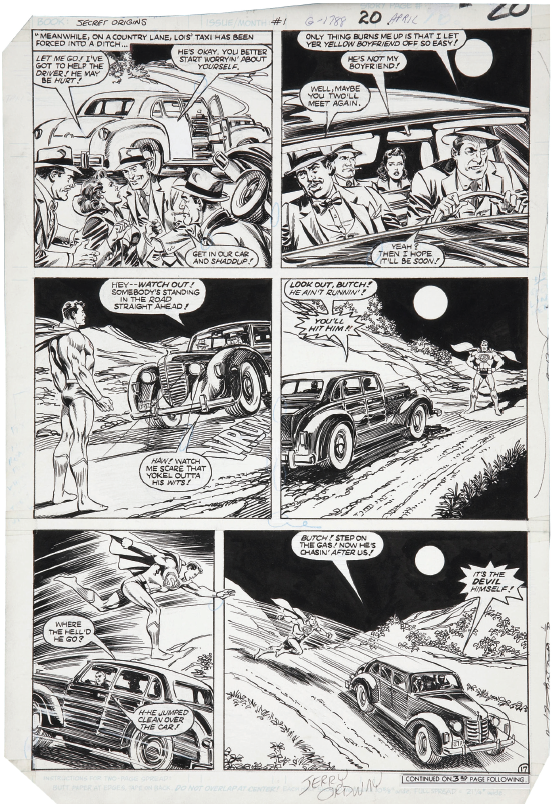
An expert in the art of the adaptation (including multiple Robert E. Howard characters), Thomas hewed close to the original material in Action Comics #1 (June 1938) and Superman #1 (Summer 1939) but sharpened dialogue and plot points throughout.
That was also the case in his follow-up, the retelling of the original Captain Marvel’s birth (from 1940’s Whiz Comics #2). “All I tried to do is some re-dialoguing and to get inside the head (heads?) of Captain Marvel and Billy Batson with an eye toward the future as well as the paradoxes of the past,” the writer noted in Secret Origins #3. Striking a different tone than the original, Jerry Bingham illustrated the adventure in a more realistic style than C. C. Beck’s cartoony original.

Like the Superman tale, the Captain Marvel episode violated Thomas’ chronological plan, a concession to Dick Giordano who specifically requested an early appearance by one of the 1940s’ most successful properties. By the time both stories were published in early 1986, much about the plans for Secret Origins had changed.
—
GOLDEN AGE GREATS AND DC TIE-INS
Rather than devoting every third issue to a non-Golden Age hero, DC now insisted on doing so in every even-numbered issue. Moreover, those more contemporary heroes needed to be characters who were prominent in DC’s mid-1980s line. “At this stage, it just didn’t make sense anymore for me to edit the whole series,”
Thomas wrote in Secret Origins #1, “so it was decided that each hero’s origin would be edited by the person who edited that hero’s regular mag.”
Consequently, Julius Schwartz—nominally the editor of the new Blue Beetle title—oversaw Secret Origins #2’s Gil Kane-illustrated history of Ted Kord and his predecessor Dan Garrett. Scripted by Len Wein, the story established the underpinnings of the ongoing Beetle title that premiered in March 1986 and represented a secondary function of the new title. On several occasions during its run, Secret Origins became a promotional arm for the DC Universe, kicking off new series, tying into crossover events, and setting up situations that would pay off in other titles.
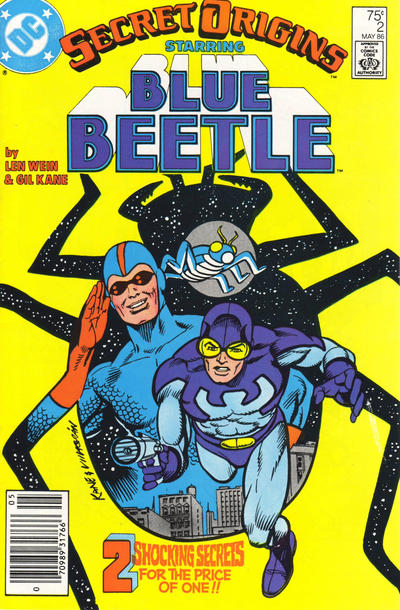
There was none of that in Secret Origins #4’s Firestorm spotlight, but the story did provide a challenge for writer/co-creator Gerry Conway. Since the Nuclear Man’s debut in 1978, Conway had already done two lengthy origin recaps (1980’s Flash #289–290 and 1984’s Fury of Firestorm #22). Virtually all of them, though, had been told from the point of view of teenager Ronnie Raymond, so Conway took a fresh approach and made SO #4 all about the background of Firestorm’s other half,
Professor Martin Stein. Although George Tuska penciled the origin itself, Firestorm co-creator Al Milgrom also contributed to the issue via an original cover.
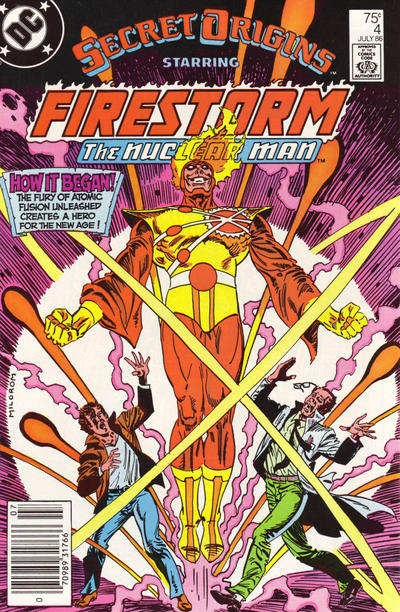
Up to this point, the material presented in Secret Origins was also culled largely from earlier issues, but Issue #5 marked a notable departure. The Crimson Avenger was one of those heroes referenced earlier, a masked vigilante who was already in business when he premiered in Detective Comics #20. It was up to Roy Thomas and his wife Dann to come up with his origin, adding real-world background to soon-to-be-hero Lee Travis and adding depth to his Chinese partner Wing.
“When I learned that the cover date of the Crimson’s first appearance was October 1938, I had no choice,” Roy declared on Issue #5’s text page. “That was the date of the famous/infamous Orson Welles ‘Invasion from Mars’ broadcast that panicked half a nation and I felt compelled to set the Crimson’s origin in that context, even though the October-dated book, then as now, would have gone on sale at least a couple months before October.”

Atmospherically illustrated by Gene Colan and Mike Gustovich, the story won raves from fans and critics alike, so much so that a 1988 miniseries was later greenlit to continue the story. A more immediate sequel appeared in Issue #7, though, where the Crimson figured into the origin of the Sandman. Once again, the Thomases worked up an origin where none had existed before, this time built around the thematic similarities of the suit-clad mystery men. Set at the 1939 New York World’s Fair, the Mike Bair/Steve Montano-illustrated tale was peppered with cameos by future members of the All-Star Squadron.
Only half-a-year old, Secret Origins was already being retooled. Marketing was “somewhat alarmed at how noncommercial some of the characters or creative teams appeared—especially so early in the new title’s run,” Robert Greenberger tells Back Issue. “Someone, either Bruce Bristow in marketing or Paul Levitz, decided to protect Roy and bolster the title’s chances of survival by making it a double-sized book [to ensure that a modern-day character would be cover-featured every month], which had the benefit of accelerating Roy’s chronological run and allowing us to support it with characters who needed to be reintroduced post-Crisis on Infinite Earths.

“As with all things involving the new continuity at the time,” Greenberger continues, “I seemed to be the go-to guy, so Dick [Giordano] invited me to take half the book and work with Roy. He had Greg Weisman as his NY-based assistant editor, so we only talked schedules and creative teams. Dick and I banged around some characters, figuring our first issue, SO #6, already had Batman with Marshall Rogers art, so we could go a little softer on the second feature, which led to shining the spotlight on Halo [from the Outsiders] with Mike W. Barr.” The story also ushered in a new look for the heroine when she adopted a new costume on the last page. “From there,” Greenberger concludes, “it was just a matter of seeing who else in the line needed the love.”
As noted, Halo shared the issue with Batman, but not the version she’d worked with in the Outsiders. This was the original Earth-Two Batman, and Thomas found room to play even after incorporating material from the Dark Knight’s 1939 debut and origin (Detective Comics #27 and 33). The formative Bruce Wayne had a fiancée named Julie Madison, but no one had ever explored the background of that relationship until SO #6. The budding romance of college students Bruce and Julie added a fresh, human touch to the traditional Batman origin.
Thomas also scored a coup by reuniting the acclaimed Marshall Rogers/Terry Austin art team—best known for their work with Steve Englehart in 1977’s Detective Comics #471–476—to draw the story.
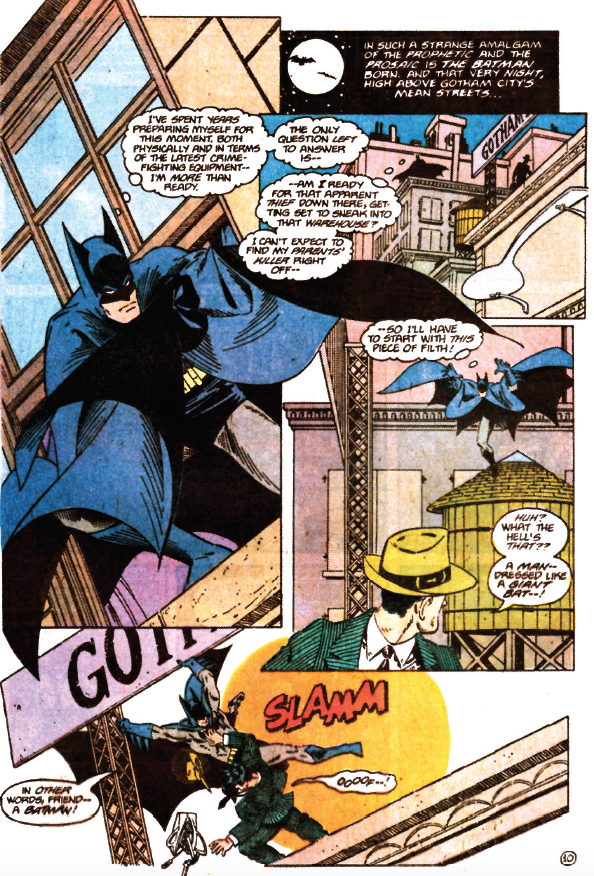
Englehart himself led off Issue #7, demonstrating that he—like Thomas—had a knack for weaving strong stories out of earlier plot threads. In this case, the subject was Guy Gardner, the adversarial Green Lantern whom Steve and penciler Joe Staton had revived to great success in 1985. Joined by artists Ernie Colón and Rodin Rodriguez, Englehart built on Gardner’s handful of earlier appearances to create a more sympathetic portrait of a character that contrasted with his mid-1980s bad-boy image.

In terms of background detail, Paul Levitz had even less to work with than Englehart when it came to detailing who Tasmia Mallor was before she became the Legion of Super-Heroes’ Shadow Lass. Consequently, SO #8’s backstory—illustrated by Tom Mandrake—was largely new, but LSH writer Levitz regularly sifted that series’ rich history for story hooks and details to build on, among them Tasmia’s cousin Grev.
Elsewhere in Secret Origins #8, Roy Thomas penned his first adaptation of a hero from Quality Comics, a major publisher of the 1940s–1950s whose heroes were now owned by DC. Quality was well known for the—ahem—quality of many of its artists, and its heroes won the adulation of teenagers who soon broke into the industry themselves. Indeed, Thomas found himself lobbied by two veteran artists—and unabashed fans—when it came time to do the adaptations.
“Both Gil [Kane] and Murphy [Anderson] loved Lou Fine and Reed Crandall and Will Eisner,” Roy remarked in Alter Ego #100. “They each wanted to draw all their heroes’ origins, so I divided them, with Murphy getting Uncle Sam and Doll Man and Black Condor, and Gil doing Jack Cole’s Spirit clone Midnight [and Firebrand] and the Ray. I had the impossible task of keeping two great artists happy.”

Anderson certainly seemed happy about SO #8’s Doll Man story, even adding a short love letter to the Quality heroes on the last page. The plot itself largely followed the events of 1939’s Feature Comics #28, including the detail that Darrel Dane’s girlfriend Martha Roberts knew that he was Doll Man. In the 1940s, she apparently “forgot” and rediscovered the secret nearly a decade later. Anyone reading the 1986 account could assume that Martha had known all along and that might well have been the case. In the aftermath of Crisis on Infinite Earths, anything was possible.

April 26, 2020
It’s no secret that “Secret Origins” is a vital part of the DC Universe.